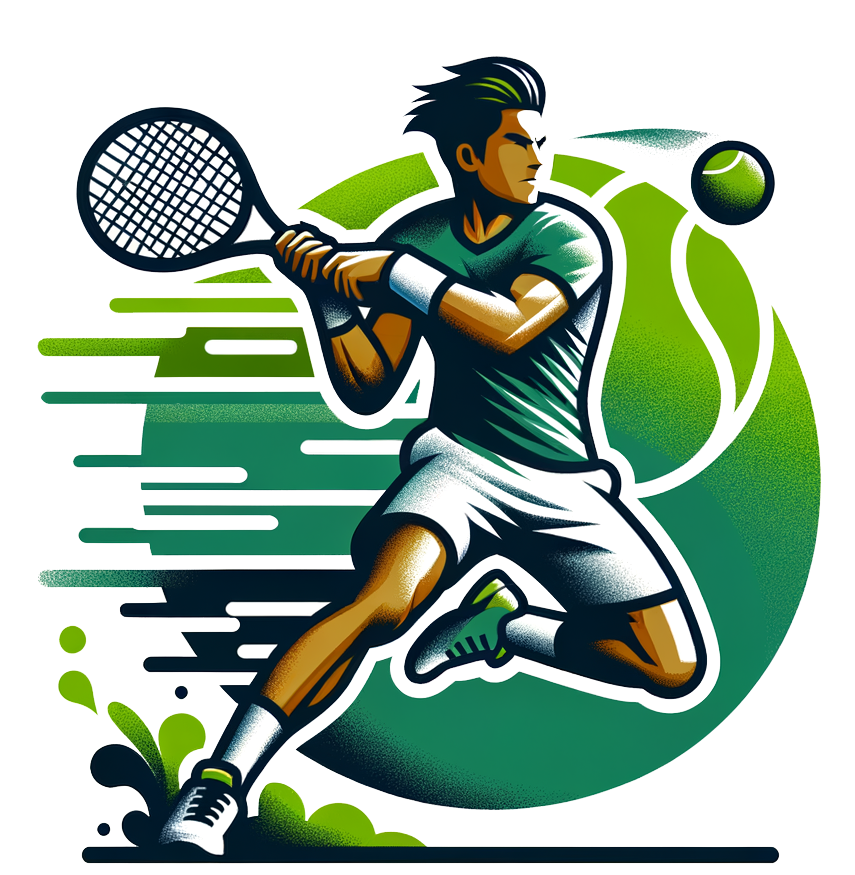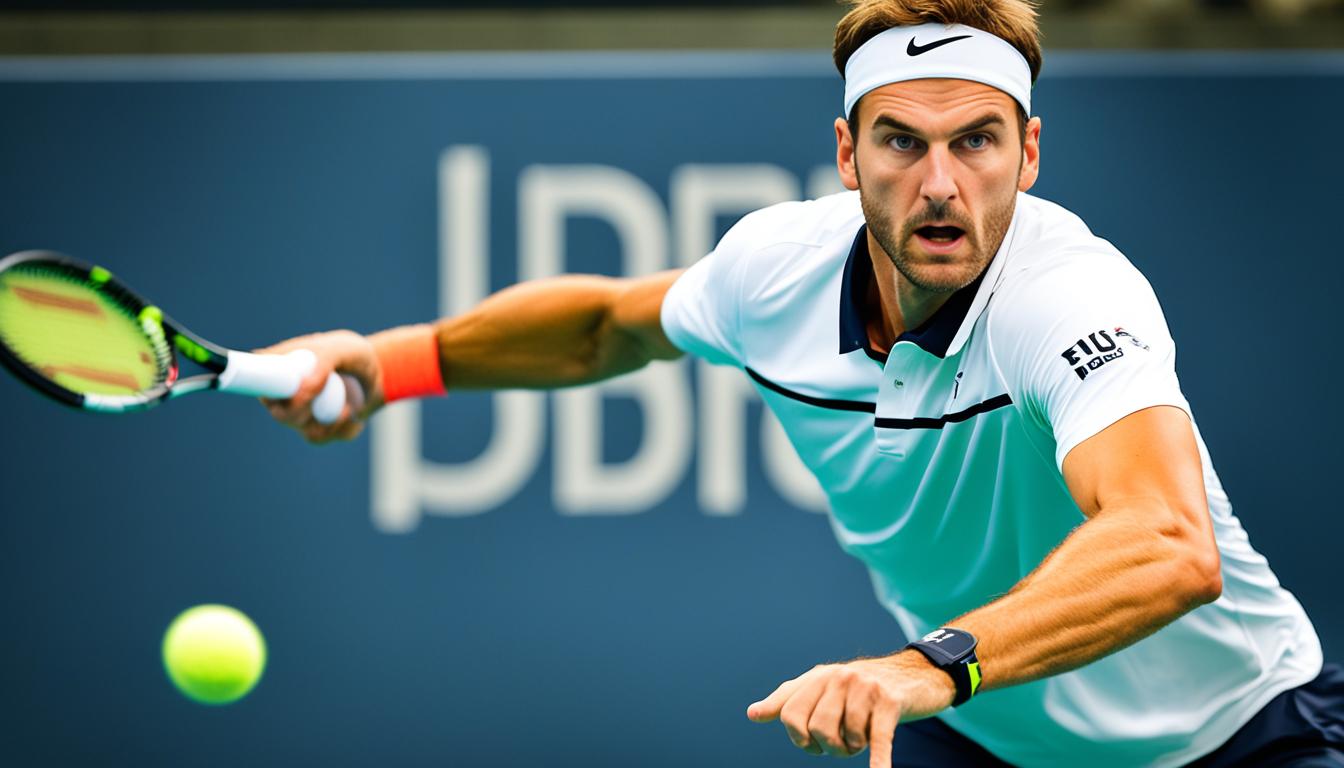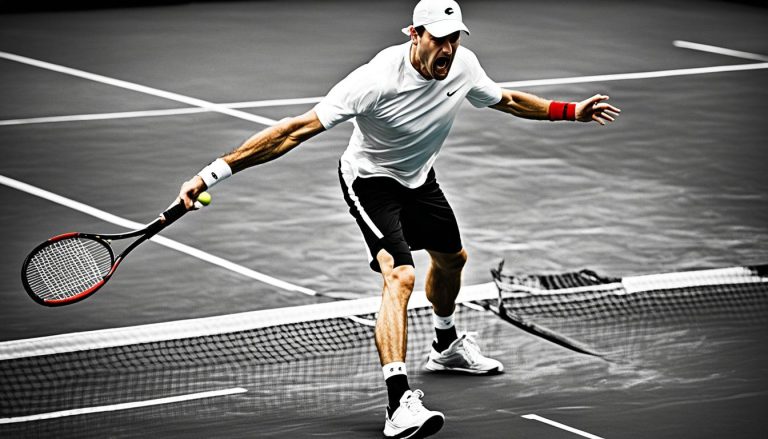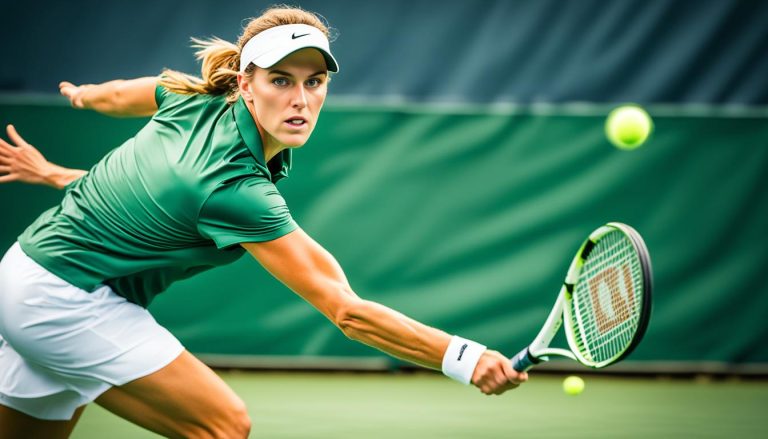How to Read Your Opponent’s Moves in Tennis
Tennis is a game of strategy and skill, and understanding how to read your opponent’s moves can give you a significant advantage on the court. By analyzing their play style, reading their body language, and anticipating their shots, you can stay one step ahead and make informed decisions during the match.
In this article, we will explore various techniques and strategies to help you improve your opponent analysis and take your tennis game to the next level. From reading body language to predicting plays, we will cover essential aspects of tennis technique to enhance your tactical approach and court awareness.
By mastering the art of reading your opponent’s moves, you can anticipate their shots, adjust your positioning, and strategically respond to their every move. This skill requires attention to detail and practice, but the rewards are well worth the effort.
So, if you’re ready to elevate your tennis game and gain a competitive edge, join us as we delve into the world of opponent analysis and learn how to read your opponent’s moves in tennis!
Factors to Consider in Reading Your Opponent’s Moves
When it comes to reading your opponent’s moves on the tennis court, there are several important factors to keep in mind. Understanding these factors can give you a strategic advantage and help you anticipate your opponent’s shots effectively.
Analyze Your Opponent’s Play Style
One crucial aspect of opponent analysis is observing your opponent’s play style. Take note of their preferred shots in different situations. Are they more inclined to hit powerful groundstrokes or rely on finesse and strategy? By understanding their play style, you can anticipate the type of shots they are likely to play and position yourself accordingly.
Pay Attention to Mechanics and Movements
Another essential factor in reading your opponent’s moves is paying attention to their mechanics and movements on the court. Observe their swing style, footwork, and overall technique. These aspects can provide valuable insights into their shot selection and playing patterns.
Consider Body Aiming Mechanics
Your opponent’s body aiming mechanics, specifically their shoulder alignment, can offer cues about the direction of their shots. A closed shoulder suggests a cross-court shot, while an open shoulder indicates a shot down the line. By analyzing their body position, you can better predict their shot placement and adjust your court position accordingly.
Be Aware of Ball Mechanics
Ball mechanics, such as spin and court properties, can significantly impact shot angles. Stay alert to the amount of spin your opponent applies to the ball, as well as how it interacts with the court surface. These factors can affect shot trajectories and guide your positioning and shot selection.
Understanding and considering these factors in reading your opponent’s moves requires focus and practice. By honing your skills in opponent analysis and adapting your strategy accordingly, you can improve your own game and gain a competitive edge on the tennis court.
Next, we’ll explore the key elements to watch for in reading your opponent’s moves, including footwork, hips, shoulders, court awareness, peripheral vision, and follow-through.
Key Elements to Watch for in Reading Your Opponent’s Moves
In reading your opponent’s moves on the tennis court, there are specific key elements that can provide valuable clues and insights. By paying close attention to these elements, you can better anticipate your opponent’s shots and make informed decisions to gain an edge in the game.
Footwork
One of the essential elements to observe is your opponent’s footwork. The way they position their feet can give you valuable information about the direction and type of shot they are likely to hit. Keep an eye out for any patterns or variations in their footwork, as it can indicate their intended shot selection.
Hips
The position and movement of your opponent’s hips can significantly impact the shot they are about to make. The rotation generated from the hips plays a vital role in the direction and power of their shots. Observing the positioning and rotation of their hips can help you anticipate the intended shot and adjust your positioning accordingly.
Shoulders
Another key element to watch for is your opponent’s shoulder alignment. The lead shoulder is particularly important, as it often provides an indication of where the shot will be directed. By paying attention to the alignment and position of their shoulders, you can better predict the intended shot and react accordingly.
Court Awareness and Peripheral Vision
Developing court awareness and utilizing your peripheral vision are crucial for reading your opponent’s moves. By maintaining a broad perspective and monitoring your opponent’s movement across the court, you can anticipate their shot selection and adjust your positioning accordingly. Peripheral vision allows you to capture subtle cues and gather information that may not be directly in your line of sight.
Follow Through
The follow-through of your opponent’s swing can provide valuable hints about their shot selection. Pay attention to how they finish their stroke, as it can reveal the type of shot they just played. Whether it is a flat shot, slice, or topspin, the follow-through can provide useful insights into their intended shot.
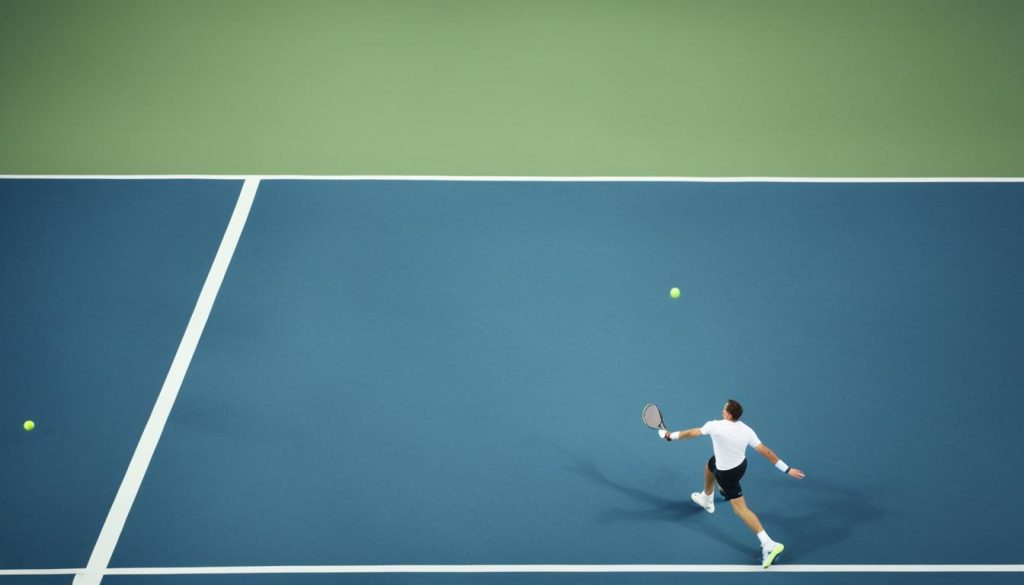
By keeping a keen eye on these key elements, including footwork, hips, shoulders, court awareness, peripheral vision, and follow-through, you can enhance your ability to read your opponent’s moves and gain a strategic advantage on the tennis court.
Using Serve History to Read Your Opponent’s Moves
One way to gain insight into your opponent’s moves on the tennis court is by analyzing their serve history. By studying the types of serves your opponent has been consistently using throughout the match, you can better anticipate their shots and improve your return game.
Many players tend to rely on a set repertoire of serves, sticking to their preferred choices and patterns. By paying careful attention to the serves they have been giving you, you can start to recognize these patterns and make predictions about the type of serve that is likely to come next.
By anticipating their serves, you put yourself in a better position to read their shots and react accordingly. This gives you a strategic advantage, enabling you to position yourself on the court more effectively and prepare for the incoming shot.
However, it’s important to note that not all players have predictable serve patterns. Some may deliberately mix up their serves throughout the match to keep their opponents guessing. In these cases, it becomes crucial to closely observe subtle cues and body language to make accurate predictions.
“By studying your opponent’s serve history, you can gain valuable insights that can help you anticipate their shots and gain a competitive edge on the tennis court.”
Here is an example of how serve history analysis can be applied:
| Serve Type | Occurrence |
|---|---|
| Flat Serve | 5 times |
| Kick Serve | 3 times |
| Slice Serve | 2 times |
Based on the serve history shown in the table above, you can deduce that your opponent has a preference for the flat serve, which appears to be their go-to choice. Armed with this knowledge, you can position yourself on the court accordingly, ready to counter their flat serve with an effective return.
However, keep in mind that in order to maintain unpredictability and keep their opponents off balance, skilled players may intentionally change up their serves during the course of the match. Therefore, it is important to continuously assess and adapt your strategies based on real-time observations of your opponent.
Next, we will explore how analyzing your opponent’s position on the baseline can further enhance your ability to read their serve.
Analyzing Position on the Baseline for Serve Reading
The position your opponent takes on the baseline can provide valuable insights into the type of serve they are likely to hit. By closely observing their placement, you can increase your ability to read their serve and make more informed decisions on the court.
When your opponent stands closer to the center mark on the baseline, it often indicates an up the middle serve. This serve typically targets the center of the court and can be a strategic choice for players looking to limit their opponent’s angle of return.
Conversely, when your opponent positions themselves closer to the singles sideline or the doubles alley, it suggests an out wide serve. This serve aims to hit the ball towards the corners of the court and can create challenging angles for the returner.
While baseline position can provide general indicators of the serve direction, it’s important to note that some players can hit a variety of targets from different positions. Therefore, it’s essential to consider other factors, such as their serve history, in conjunction with their baseline position to better predict their serve.
For instance, if your opponent has consistently hit up the middle serves from a center baseline position in previous matches or sets, it’s more likely that they will stick to this pattern. However, if they have a history of mixing up their serves, you should remain prepared for different serve directions regardless of their baseline position.
| Baseline Position | Serve Direction |
|---|---|
| Standing closer to the center mark | Up the middle serve |
| Positioning closer to the singles sideline or doubles alley | Out wide serve |
By analyzing the baseline position and incorporating their serve history, you can enhance your ability to read your opponent’s serve and anticipate their next move. This strategic advantage allows you to position yourself effectively on the court and improve your return game.
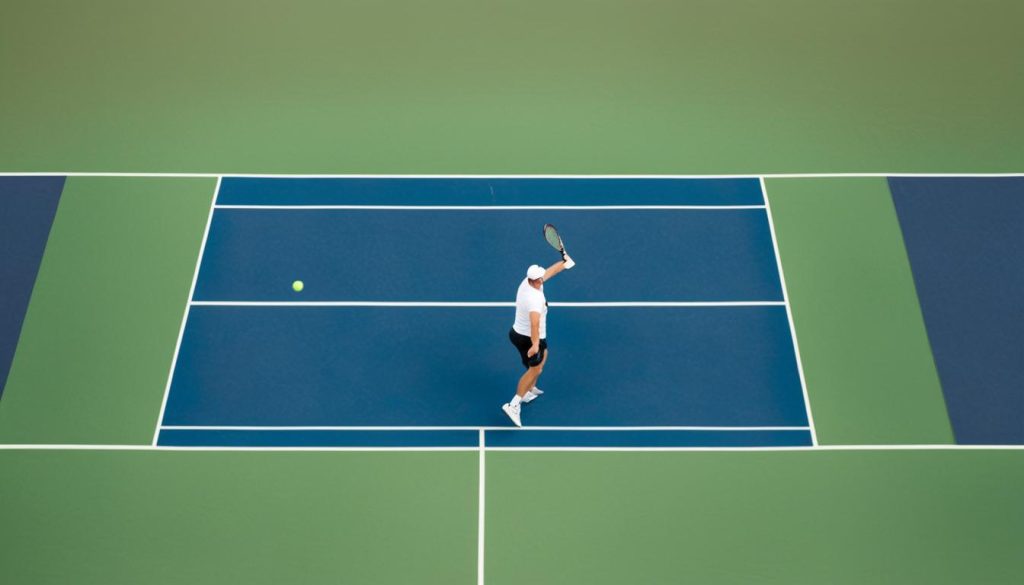
Considering Match Dynamics in Reading Opponent’s Serve
Match dynamics play a crucial role in reading your opponent’s serve. It requires a keen observation of the game and an understanding of your partner’s poaching tendencies and weaknesses. By analyzing these factors, you can anticipate the type and placement of your opponent’s serve, giving you an edge on the court.
When your doubles partner is consistently poaching, your opponent will likely try to serve out wide to avoid the poacher’s reach. This serves to disrupt your partner’s positioning and limit their ability to intercept the ball. Anticipating this pattern, you can position yourself accordingly and be ready to cover the open areas.
“If your doubles partner is consistently poaching, expect your opponent to try to serve out wide to avoid the poacher.”
Conversely, if your opponent’s partner is poaching frequently, they may opt for more serves up the middle. This serves as a strategic move to set up their partner for successful poaches. By recognizing this tactic, you can adjust your positioning and be prepared to counter their partner’s aggressive moves.
It is also essential to consider any weaknesses that you or your opponent have demonstrated during the match. Weaknesses such as a vulnerable backhand or difficulty handling high balls can influence the type and placement of serves. Exploiting these weaknesses can put you in a favorable position to capitalize on your opponent’s serve.
By understanding match dynamics, your doubles partnership, and the weaknesses of both you and your opponent, you can better anticipate the serve’s direction and adjust your positioning accordingly. This knowledge will allow you to read your opponent’s serve more effectively, giving you a strategic advantage in the game.
| Match Dynamics | Opponent’s Serve Strategy |
|---|---|
| Your doubles partner consistently poaches | Expect serves out wide to avoid the poacher’s reach |
| Your opponent’s partner frequently poaches | Anticipate serves up the middle to set up successful poaches |
| Identification of weaknesses | Exploit weaknesses to influence serve type and placement |
Conclusion
Mastering the art of reading your opponent’s moves in tennis is a crucial aspect of developing a winning strategy on the court. By carefully analyzing your opponent’s court position, play style, mechanics, and body language, you can gain valuable insights that will allow you to anticipate their shots and make more informed and tactical decisions. This skill can be honed through practice and a keen attention to detail, ultimately enhancing your ability to read and respond to your opponent’s every move.
By incorporating opponent analysis into your tennis strategy, you can gain a significant advantage. Understanding how your opponent positions themselves on the court and their preferred shots in different situations can better prepare you for their moves. Additionally, being observant of their footwork, hips, shoulders, and follow-through can offer important cues about the direction and type of shots they are likely to hit.
Reading body language and anticipating shots is not a foolproof method, but it grants you a tactical edge in the game. It allows you to be proactive, rather than reactive, on the court, giving you the opportunity to position yourself strategically and respond skillfully to your opponent’s shots. With a comprehensive understanding of your opponent’s moves, you can exploit their weaknesses and exploit their strengths.
Remember, the key to success lies in consistent practice and refining your tennis technique. By developing your opponent analysis skills and learning to read body language effectively, you can elevate your game and achieve a tactical advantage that sets you apart from your competitors. With dedication, perseverance, and a strategic mindset, you can excel on the tennis court and confidently face any opponent that comes your way.
